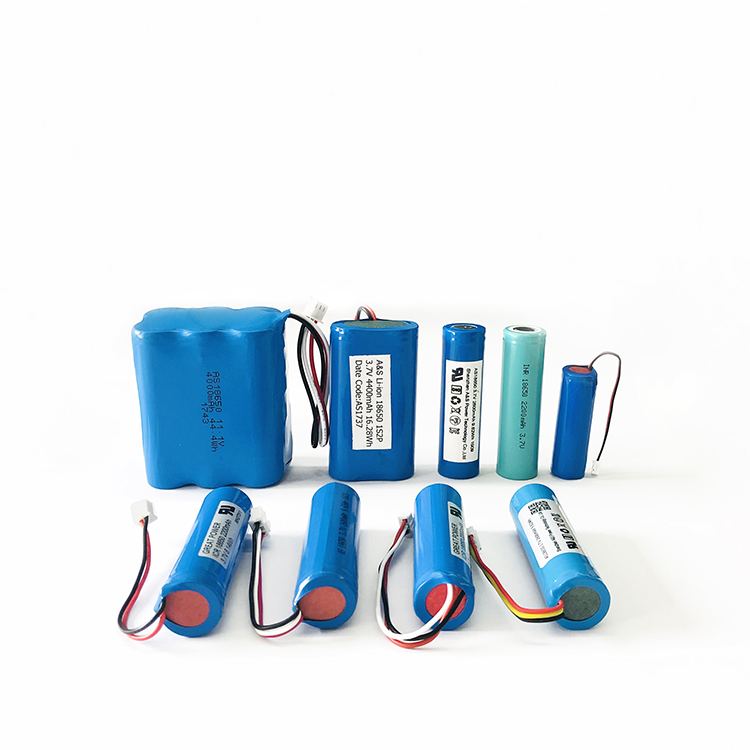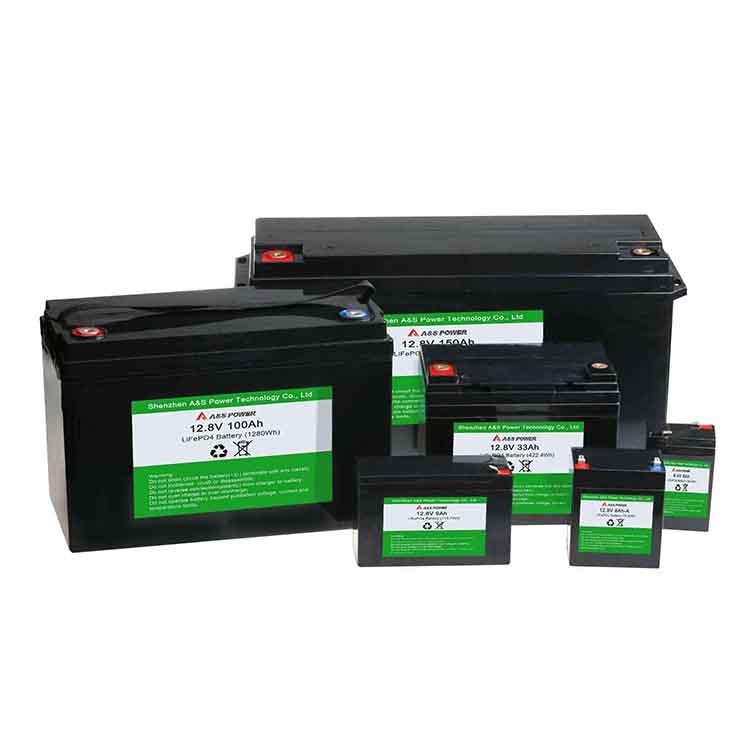Analysis of the causes of lithium ion battery bulge
2021-06-25
During the use of lithium ion battery, the thickness of the electrode plate will change to some extent, especially the graphite negative electrode.According to the existing data, lithium ion battery after high temperature storage and circulation, prone to bulging, thickness increase rate of about 6%~20%, the positive expansion rate is only 4%, negative expansion rate is more than 20%.The fundamental reason for the bulging caused by the increased electrode thickness of lithium-ion battery is the nature of graphite. The negative graphite forms LiCx(LiC24, LiC12 and LiC6, etc.) when embedded with lithium, and the change of lattice spacing leads to the formation of microscopic internal stress and expansion of the negative electrode.The following figure is the schematic diagram of the structure change of the graphite negative electrode in the process of placement, charge and discharge.
The expansion of graphite negative electrode is caused by the non-recoverable expansion after embedding lithium.This part of expansion is mainly related to particle size, adhesive agent and pole structure.The expansion of the negative electrode deforms the coil core, forming a cavity between the electrode and the diaphragm, forming micro-cracks on the negative particles, cracking and recombination of the solid electrolyte phase interface (SEI) film, and consumption of electrolyte, resulting in poor cycling performance.There are many factors that affect the thickness of the anode sheet, among which the properties of the adhesive and the structural parameters of the anode sheet are the most important two.
The commonly used adhesive for graphite anode is SBR. Different adhesives have different elastic modulus and mechanical strength, which have different effects on the thickness of electrode sheet.The rolling force of the electrode plate after coating also affects the thickness of the negative electrode plate in the battery.Under the same stress, the greater the elastic modulus of the adhesive, the smaller the physical rebound of the electrode piece;During charging, the graphite lattice expands due to the insertion of Li+.At the same time, due to the deformation of negative particles and SBR, the internal stress is completely released, so that the expansion rate of negative electrode increases sharply, and SBR is in the stage of plastic deformation.This expansion rate is related to the elastic modulus and breaking strength of SBR. As a result, the larger the elastic modulus and breaking strength of SBR, the smaller the irreversible expansion will be.
When the amount of SBR is not the same, the pressure of the electrode sheet is different. The different pressure makes the residual stress of the electrode sheet have certain difference. The greater the pressure, the greater the residual stress, which leads to the increase of the physical expansion, full electric state and empty electric state expansion rate in the early stage.The lower the SBR content, the smaller the pressure, the smaller the physical storage, the smaller the expansion rate of full state and empty state;The expansion of negative electrode deforms the coil core, affects the degree of lithium embedded in negative electrode and the diffusion rate of Li+, and then has a serious impact on the cycle performance of the battery.
二.battery gas caused by bulging
Battery internal gas production is another important cause of battery bulging, whether the battery in the normal temperature cycle, high temperature cycle, high temperature use, it will appear different degrees of bulging gas production.According to the current research results show that the nature of the battery cell gas is caused by the decomposition of the electrolyte.There are two kinds of circumstances, the electrolyte decomposition is an electrolyte impurities, such as the moisture content and metal impurity gas electrolyte decomposition, the other one is electrolyte electrochemical window is too low, causing the decomposition in the process of charging, the electrolyte of EC, DEC, such as solvent after get electronic, there will be a free radical, free radical reaction in the immediate aftermath of low boiling point hydrocarbons, esters, ethers and CO2, etc.
After the lithium-ion battery is assembled, a small amount of gas will appear during the preformation process. These gases are unavoidable and are also the source of the so-called irreversible capacity loss of the cell.In the first charge and discharge process, electrons from the external circuit to the negative electrode will be REDOX reaction with the electrolyte on the surface of the negative electrode, to generate gas.During this process, SEI is formed on the surface of graphite anode. With the increase of SEI thickness, the continuous oxidation decomposition of electrolyte is inhibited by the inability of electrons to penetrate.About the formation of SEI see article: dry | SEI is what?What a big impact on lithium-ion batteries!In the process of battery use, the internal gas production will gradually increase, the reason is still because of impurities in the electrolyte or the excess of water in the battery.Impurity in the electrolyte should be carefully eliminated. The loose water control may be caused by the electrolyte itself, the lax introduction of water in the battery package and the angular damage. In addition, the overcharge and overdischarge abuse of the battery, internal short circuit will also accelerate the gas production rate of the battery, resulting in battery failure.
In different systems, the degree of battery bulging is different.In battery graphite anode system, the cause of the gas to bulge or important as described above the SEI film formation, batteries inside water exceeds bid, and poor into abnormal process, packaging, etc, and in the anode system, lithium titanate battery bilge gas is more serious than graphite/sliding battery system, in addition to the electrolyte impurities, moisture and technology, another is different from the graphite cathode for lithium titanate battery is the same, not like graphite anode system form the SEI film on the surface, suppress its reaction with the electrolyte.In the process of charging and discharging, the electrolyte is always in direct contact with the surface of Li4Ti5O12, which leads to the continuous reduction and decomposition of electricity on the surface of Li4Ti5O12 material, which may be the root cause of the bloating of Li4Ti5O12 battery.The important components of gas are H2, CO2, CO, CH4, C2H6, C2H4, C3H8 and so on.When the lithium titanate is soaked in the electrolyte alone, only CO2 appears. When the lithium titanate and NCM material are prepared into the battery, the gas appears including H2, CO2, CO and a small amount of gaseous hydrocarbons. And after the battery is made, H2 will appear only in the cycle of charging and discharging, and the content of H2 in the gas appears at the same time, over 50%.This indicates that H2 and CO gases will be present during charge and discharge.














